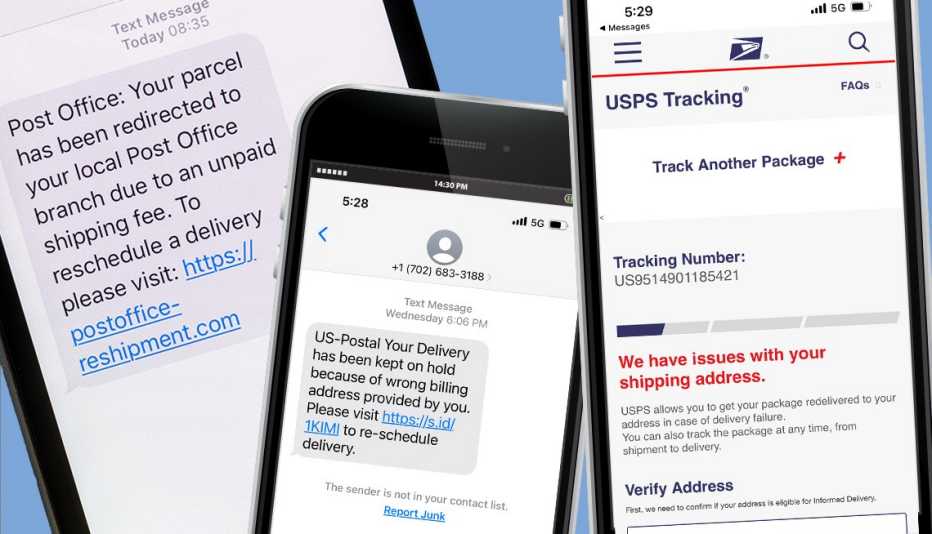In late July, the Washington-based Pew Research Center surveyed 9,397 American adults about online scams and attacks in the US. The results, recently published by the Los Angeles Times, show that 73% of respondents reported encountering at least one form of online fraud.
Most respondents receive scam emails, messages, or calls at least once a week. 51% receive them at least once a month. 32% said they had experienced some form of online scam or cyberattack in the past 12 months.
The most common online scams involve credit card fraud, online shopping scams, or ransomware attacks, a type of malware that blocks access to files or computer systems until the victim pays a ransom. About one-fifth of American adults have lost money due to online scams or cyberattacks.
 |
A scam package delivery message containing a malicious link in the US. Photo: AARP |
A scam package delivery message containing a malicious link in the US. Photo: AARP
Many Americans believe that older people are at higher risk of online scams than younger people.
However, the US Federal Trade Commission (FTC) reported in 2021 that Generation X, Millennials, and Generation Z, aged 18 to 59, had a 34% higher rate of reporting monetary loss due to online scams compared to those over 60.
These generations are being targeted by scams ranging from social media ads and fake job opportunities to fraudulent investments.
Online scams and cybercrimes are rapidly increasing in the US, reaching a record $16.6 billion in losses in 2024, according to the FBI. 80% of respondents in the Pew survey said this is a major national problem.
Duc Trung (According to Los Angeles Times, Washington Post)












